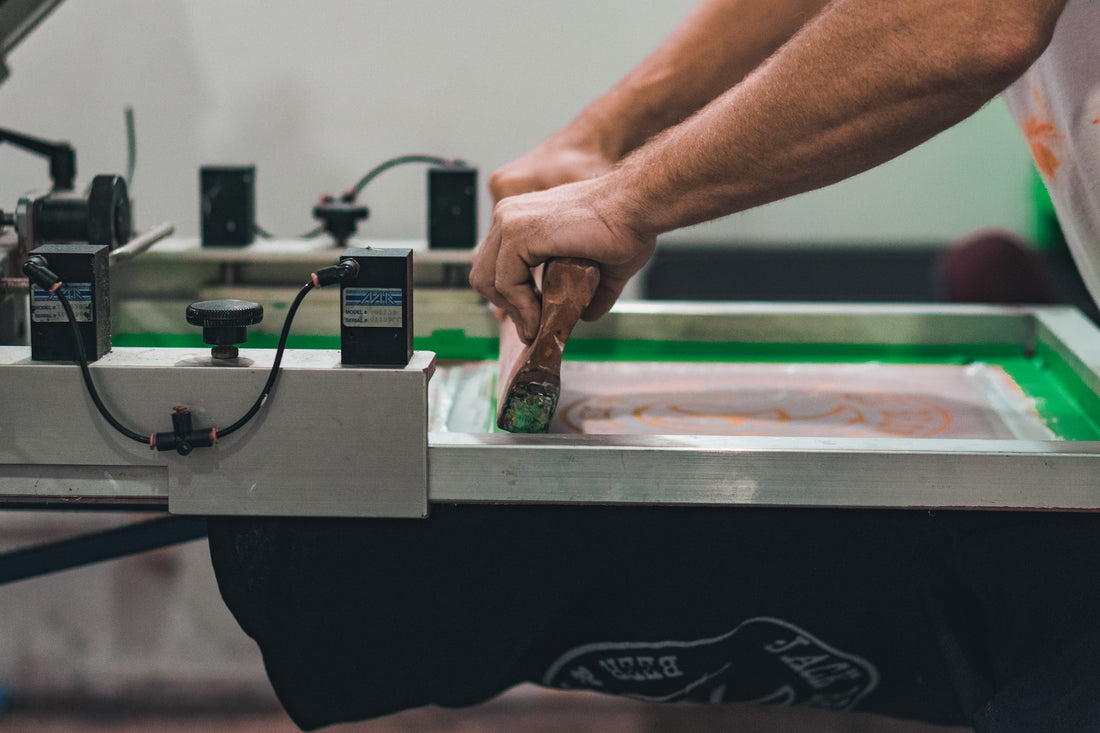In the world of custom apparel and merchandise, there is an array of printing techniques to choose from, each with its strengths and weaknesses. In this article, we will guide you through the main differences between Direct to Film (DTF) transfers, Direct to Garment (DTG) printing, and Screenprinting techniques, exploring their advantages, limitations, and ideal applications to help you make the most informed decision for your upcoming project.
Navigating the diverse choices in printing techniques can be an overwhelming and complicated task, particularly if you're new to the field or unfamiliar with the technical aspects of each method. With this comprehensive guide, we aim to simplify the process by breaking down each technique, showcasing their unique characteristics and applications, as well as shedding light on the critical factors to consider when choosing between DTF, DTG, and Screenprinting.
First, we will introduce each of the printing methods, providing a quick overview of their fundamentals. We will then delve into the factors that typically influence the choice of printing technique – cost effectiveness, turnaround time, design intricacies, and versatility in materials and substrates. By evaluating each method through these lenses, we will provide a clearer understanding of their strengths and limitations.
Next, we will explore the common applications associated with each of the printing techniques, touching upon the industries and projects they're most suited for. This section will give you valuable insights into how and where these methods excel and which might be the best fit for your specific needs.
As part of our commitment to delivering informative and helpful content, we will also provide several real-life scenarios that exemplify the decision-making process in selecting the ideal printing technique for different projects. By sharing these practical examples, we hope to instill confidence in your ability to make the best decisions for your own projects.
With this comprehensive article, you will be better equipped to understand the nuances of DTF transfers, DTG printing, and Screenprinting, empowering you to make more informed choices to ensure the success of your printing projects. Discover a wealth of insights as we delve into the world of printing techniques and explore the best solutions for your needs.
Overview of Printing Methods
Before diving into the nitty-gritty details, let's first get familiarized with the basics of each printing technique:
- Direct to Film (DTF) transfers involve printing onto special film sheets with specialized ink, which then gets transferred to the target substrate (typically fabric) using heat and pressure.
- Direct to Garment (DTG) printing involves applying ink directly to the garment or fabric using a specialized printer, similarly to your standard paper printer.
- Screenprinting, arguably the most widely-recognized method, entails creating a stencil-like screen through which ink is applied onto the substrate.
Factors Influencing Your Choice of Technique
Now that we've covered the basic principles of each method, let's dive into the factors that will impact your decision-making process while choosing a printing technique.
Cost Effectiveness
The cost of each method varies depending on order size, number of colors, and overall complexity. Generally, screenprinting is considered the most cost-effective option for large orders with simple designs, but it may not be suitable for projects featuring intricate details or a variety of colors. Conversely, DTF and DTG printing tend to be better suited for smaller runs, allowing for a cost-effective approach without compromising details or color complexity.
Turnaround Time
Deadlines and time constraints may play a significant role in determining your ideal technique. Screenprinting can be labor-intensive, involving multiple steps like screen setup and clean-up. Consequently, this method typically demands the longest turnaround time of the three. Both DTF transfers and DTG printing offer quicker setups and execution, making them ideal for projects with tight deadlines.
Design Intricacies
The complexity and intricacy of a design can significantly impact the choice of printing method. While screenprinting is excellent for simpler designs with only a few colors, it may fail to deliver the vibrancy and detail of more elaborate designs. DTF transfers are known for their capacity to achieve sharp details and photo-quality images, making this method ideal for intricate designs. Similarly, DTG printing excels in reproducing high-resolution prints on fabric.
Versatility in Materials and Substrates
The material or substrate of your project can also influence your choice of printing technique. While screenprinting can be used on a variety of substrates, certain fabrics and materials may pose challenges. DTF transfers can adhere to virtually any fabric blend, allowing for maximum versatility. DTG printing, though mostly limited to cotton-based substrates, can yield impressive results on an assortment of fabric types.
Common Applications and Ideal Techniques
Understanding the typical applications of each technique will provide additional clarity for your decision-making process:
- Apparel Industry: For small runs with intricate designs, DTF transfers can be ideal. On the other hand, DTG printing is perfect for custom, one-off garments or printing on white/light-colored fabrics. However, screenprinting prevails when producing bulk orders featuring simple designs.
- Home Décor: For printing on items like cushions and curtains, both DTF and DTG printing offer high-quality results due to the level of detail they can achieve. Screenprinting, while viable in some cases, may not be suitable for all fabrics or design complexities.
- Promotional Items: DTF transfers are ideal for many promotional item substrates, while screenprinting excels in large-volume printing on standardized items, such as t-shirts or tote bags.
Example Scenarios to Inform Your Choice
- Example Scenario 1: You're tasked with printing 500 t-shirts featuring a bold, 3-color logo for a company event. In this case, screenprinting is likely the best option due to its cost-effectiveness for large runs with limited colors and simple designs.
- Example Scenario 2: You're creating merchandise for a local artist who's provided a high-resolution image with intricate details and various colors. A small number of garments need printing, making DTF transfers or DTG printing the more appropriate choice, considering design intricacies and order size.
Conclusion
With the insight provided in this comprehensive guide, you're now equipped to make well-informed decisions when choosing between Direct to Film (DTF) transfers, Direct to Garment (DTG) printing, and Screenprinting techniques. By carefully weighing the factors such as cost-effectiveness, turnaround time, design intricacies, and materials, you can optimize your project's success and ensure the best results possible.
Always remember that every project is unique, and the ideal printing technique may vary based on individual circumstances. Adaptability, knowledge, and a keen understanding of these methods are key to thriving in the world of printing. Armed with this information, you're ready to tackle your next project with confidence, regardless of the chosen technique. And, as the Southeast's #1 source for DTF transfer films, Southeast Prints is committed to providing educational, informative, and helpful content related to our services and the broader aspects of the printing industry. So, consider working with us today for your DTF print needs. Happy printing!

